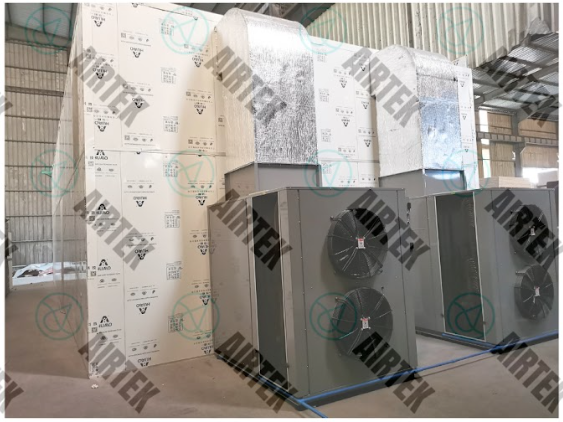Traditional timber preparation has relied on natural air-drying for centuries, but this approach now creates significant bottlenecks in modern production schedules. Air-drying timber can take months or even years depending on wood species and thickness, creating unpredictable inventory cycles. Modern wood dryer systems revolutionise this process by reducing drying times from months to mere weeks.
The controlled environment within a dedicated wood dryer eliminates the guesswork associated with outdoor drying conditions. Weather patterns, humidity fluctuations, and seasonal variations no longer dictate production timelines. Professional timber operations increasingly recognise that investing in proper drying equipment transforms their entire business model from reactive to proactive.
The Limitations of Traditional Air-Drying Methods
Air-drying timber presents numerous challenges that directly impact profitability and product quality. Outdoor conditions create inconsistent drying rates across different sections of timber stacks. Some boards dry faster than others, leading to warping, splitting, and uneven moisture distribution throughout the material.
Weather dependency makes planning production schedules nearly impossible with traditional methods. Rain, fog, and high humidity can halt the drying process for days or weeks. Timber yards often find themselves with partially dried stock that cannot meet customer deadlines because Mother Nature refuses to cooperate.
Controlled Environment Advantages
Modern drying chambers maintain precise temperature and humidity levels throughout the entire process. This controlled atmosphere ensures uniform moisture removal from every piece of timber in the chamber. The result is consistent quality across all boards, regardless of their position within the drying stack.
Temperature control prevents the rapid moisture loss that causes surface checking and internal stress in timber. Gradual, controlled drying preserves the structural integrity of wood fibres. The even heat distribution eliminates hot spots that can cause localised over-drying or case-hardening issues.
Speed and Efficiency Gains
Commercial drying equipment can reduce traditional drying times by 75% or more. Oak timber that requires 12 months of air-drying can be ready for use in just 6-8 weeks using controlled drying methods. This dramatic time reduction allows timber processors to turn inventory multiple times per year instead of once.
Faster processing cycles mean improved cash flow and reduced storage requirements. Timber yards can operate with smaller inventory levels because they can process raw materials quickly to meet customer demands. The predictable drying schedules enable better customer service and more reliable delivery commitments.
Moisture Content Precision
Achieving uniform moisture content throughout timber pieces remains one of the biggest challenges with air-drying. Natural drying often results in moisture gradients where the surface appears dry but the core retains excessive moisture. This inconsistency leads to movement and distortion after the timber is put into service.
Professional drying systems monitor and control moisture levels with remarkable precision. Sensors track moisture content throughout the drying cycle, automatically adjusting conditions to achieve target levels. The result is timber with consistent moisture content from surface to core, reducing post-installation problems.
Quality Control Benefits
Controlled drying environments eliminate many defects associated with traditional methods. Surface checking, end splitting, and warping problems become manageable through proper temperature and humidity control. The enclosed environment also protects timber from contamination, insect infestation, and weather damage during the drying process.
Quality consistency becomes predictable rather than hoping for favourable weather conditions. Every batch processed through controlled drying equipment receives identical treatment, resulting in uniform quality standards. This consistency allows timber processors to guarantee moisture levels and quality specifications to their customers.
Energy Efficiency Considerations
Modern drying systems incorporate heat recovery technologies that capture and reuse thermal energy. Dehumidification systems extract moisture from timber and recover the latent heat energy for reuse in the drying process. These efficiency measures reduce operating costs compared to older drying methods.
Solar-assisted drying systems combine renewable energy with controlled environments to reduce electricity consumption. Heat pumps and biomass heating systems offer sustainable alternatives to traditional fossil fuel heating. The initial investment in efficient drying equipment often pays for itself through reduced energy costs over time.
Production Capacity Improvements
Dedicated drying facilities allow timber processors to operate year-round regardless of weather conditions. This consistency enables better production planning and capacity utilisation. Facilities can process multiple batches simultaneously using different drying schedules optimised for various timber species and thicknesses.
Increased throughput capacity means better utilisation of labour and facility resources. Staff can focus on value-added activities rather than waiting for natural drying processes to complete. The predictable processing times enable better coordination between sawing, drying, and finishing operations.
Investment Return Analysis
The upfront cost of professional drying equipment may seem substantial, but the return on investment often justifies the expense. Faster inventory turnover, improved quality consistency, and reduced waste contribute to improved profitability. Many operations find that drying equipment pays for itself within 2-3 years through operational improvements.
Reduced storage space requirements can offset equipment costs through property savings. Timber that previously required months of outdoor storage space can be processed quickly through compact drying chambers. This space efficiency becomes particularly valuable in areas where land costs are high.
Operational Flexibility
Modern drying systems offer programmable controls for different timber species and customer requirements. Operators can create custom drying schedules optimised for specific wood types, thicknesses, and end-use applications. This flexibility allows processors to serve diverse market segments with specialised products.
Remote monitoring capabilities enable operators to track drying progress and adjust parameters without constant physical supervision. Automated systems can alert operators to maintenance needs or process deviations. This technology integration reduces labour requirements and improves process reliability.
Conclusion
Professional drying equipment transforms timber preparation from a weather-dependent waiting game into a controlled, predictable process. The combination of speed, quality consistency, and operational flexibility makes modern drying systems essential for competitive timber operations. Processors who embrace controlled drying technology position themselves for improved profitability and customer satisfaction in an increasingly demanding marketplace.

